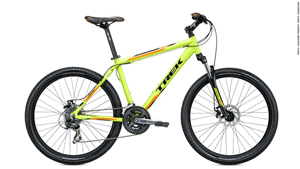Trek Bikes integrated a digital advice technology in the form of an interactive, intelligent Bike Finder that helps its website visitors choose the right bike with ease. This decision has proven to improve the digital customer experience, increase brand consideration and maximize conversions.
Digital has undoubtedly changed the purchase path for consumers as it now includes more channels, more touchpoints, more choices, and more options. Brand consideration can be lost and won at any point, which is why every brand moment in the customer journey counts to be able to influence future purchase decisions.

Trek Bicycle, the largest bicycle manufacturer in the U.S., has long been a household name for cycling enthusiasts. However, it’s large range of specialized products posed a hurdle in the path-to-purchase of consumers who had little knowledge of bikes and their differences and didn’t know exactly which bike would be best for them and why.
“We needed an intuitive way to help shoppers without a wide range of experience find the bike that was most appropriate for their needs,” says Trek’s vice president of marketing, Dean Gore. “We have a large product offering and needed a digital solution that could help people easily navigate what’s available based on why they’re interested in a bike.”
To remove friction from the brand experience and guide purchase decisions in a meaningful way, Trek took maximum advantage of SmartAssistant’s digital advice technology and developed a digital bike advisor (also commonly referred to as guided selling, product finder, product selector and product quiz).
“We have over 300 models on our website, and somebody who is not very familiar with bikes is going to become very confused very quickly,” adds Curtis Bice, marketing project manager, Trek Bicycle. “For consumers without much bike knowledge, there wasn’t a good way of narrowing down the options. We needed a better way to inform, inspire, educate and excite our visitors about the Trek brand.”
Because the technology offers all necessary features out-of-the-box (such as product data management, recommender algorithms, consistency checks, variant testing, analytics) and as such removes the complexities usually associated with creating digital advisors, Trek’s marketing team didn’t have to worry about the technical implementation details and could focus on defining the right questions and designing user experience.
It takes users through a selection of questions to establish their unique needs, such as:
● Where do you want to ride? (e.g. open roads, dirt trails, city streets)
● Why do you want to ride? (fitness, commutes, just want to ride)
● What riding position do you prefer?
● How much do you want to spend?
After analyzing those needs, it provides users with a dynamically curated selection of bikes that are just right for them and their expectations.
Related articles:


 Network
Network

